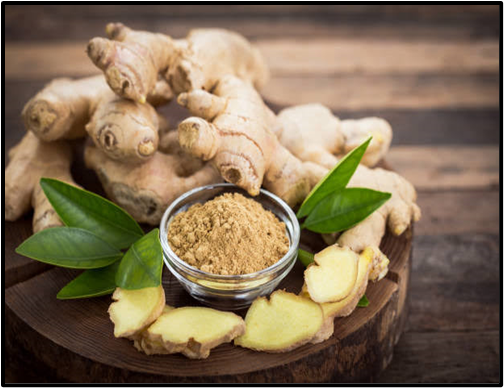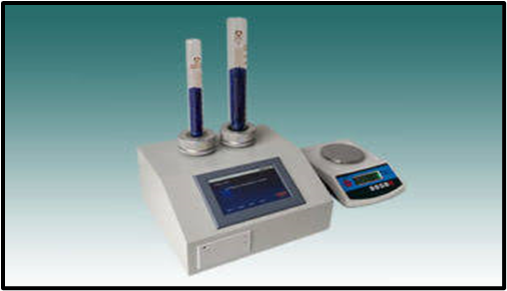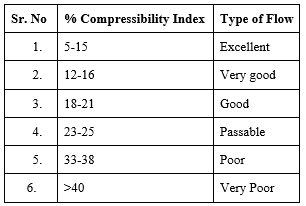Polyherbal antacid formulations have gained popularity due to their potential synergistic effects and perceived safety compared to single-herb formulations. This abstract explores the preparation and formulations of polyherbal antacid tablets or powders, emphasizing the selection of herbs based on their traditional use and scientific evidence supporting their efficacy in alleviating gastrointestinal discomfort. The process involves selecting appropriate herbs, standardizing their constituents, and formulating them into tablets or powders using suitable excipients to ensure stability, bioavailability, and palatability. Factors such as herb-drug interactions, dosage forms, and regulatory considerations are also discussed to facilitate the development of effective and safe polyherbal antacid products for clinical use. Herbal treatment is an alternative form for medicine where natural herbs and their extracts are used to cure a situation. the available allopathic antacids on chronic use are source of many side effects which can cause great discomfort to the patient.
Polyherbal antacid, Hyperacidity, Polyherbal Powder Formulations
Stomach is an integral part of body for digestion of food and is essential part of digestion system. It produces acid which is use in digestion of salivated food in stomach. Sometimes the acid production goes up which makes hyperacidity. Polyherbal antacid tablets are pharmaceutical formulations designed to alleviate symptoms of acidity and heartburn by neutralizing excess stomach acid.
These tablets typically consist of a combination of herbal ingredients known for their antacid properties, carefully selected and formulated to provide effective relief from gastrointestinal discomfort. The use of multiple herbs in such formulations aims to enhance their efficacy through synergistic effects, offering a holistic approach to digestive health As an alternative to conventional antacids, polyherbal tablets are gaining popularity due to their perceived safety, natural ingredients, and potential additional health benefit. It refers to a set of symptoms caused by an imbalance between the acid secreting mechanism of the stomach and proximal intestine and the protective mechanisms that ensure their safety. Gastric juice is made up of water, electrolytes, hydrochloric acid (HCl), enzymes, mucus, and intrinsic factor. HCl is se-created by the parietal cells. On the average, an adult stomach produces 1.5–2.5 litres of gastric juice per day. Measuring a pH of 1.5 on a pH scale (0–14), the gastric juice is a strongly acidic solution expressing a high concentration of hydrogen ions (H+). The acidic stomach content is essential for food digestion and activation of digestive enzymes. The stomach however sheds the mucous lining every three days. Stimulation of H+ secretion occurs during feeding. In the event of ex-cess acid content, H+ ions retract to the blood, leading to muscular contraction, inflammation, bleeding, pain and ulceration due to the stomach lining break down with subsequent acid attack on the stomach wall.
AIM OF THE RESEARCH PROJECT:
- To prepare and formulate a polyherbal antacid powder that is effective, safe, and provides rapid relief from symptoms of acidity and indigestion
OBJECTIVE:
- To achieve greater therapeutic efficacy.
- Reduces acidity and provides relief.
- Relieves heartburn and indigestion.
- Formulation of Polyherbal Powder
- Selection of Herbal Ingredients
HERBAL INGREDIENTS: -
ASAFOETIDA:
Synonyms: Anghoze, hing, pirunpaska.
Biological name: Ferula asafoetida
Scientific name: Devil’s dung/dirt
Sanskrit Name: Badhika, Agudagandhu
Family: Apiaceae
Native Region and Geographical Distribution: Mediterranean regions of Central and Eastern Asia.
Chemical constituent: Carbohydrates 67.8% per 100gms.
- Its mineral and vitamin contents include substantial calcium besides phosphorus and iron.

Fig. Asafoetida
USES:
- Asafoetida helps to get rid of toxins in the stomach and restore its pH (acidic balance), which is necessary to maintain digestion and smooth functioning of the digestive juices. It helps in treating gas, indigestion, and acidity.
- A large amount of fiber and carbohydrates are found in asafoetida, which helps in improving the digestion system.
- Besides, drinking asafoetida water also improves metabolism.
- Asafoetida water helps in reducing weight. Anti-inflammatory properties are found in it, which reduce weight rapidly.
- Digestion system improves
- Drinking asafoetida water improves the digestion system.
- Besides, it also eliminates the problems of gas, indigestion and constipation.
- Asafoetida water cleans the kidneys. Along with kidney, it also helps in preventing urine infection.
- Asafoetida water is beneficial for bones and helps in strengthening the bones. The calcium present in it makes the bones strong.
- cure breathing problems
- In case of respiratory problems, drink asafoetida water.
- Anti-inflammatory, anti-viral and anti-biotic properties are found in it, which provide relief from respiratory problems.
2. Long Pepper: -
Synonyms: chili pepper, hot pepper, red pepper.
Biological name: - Piper longum
Scientific name: Long pepper
Family: Piperaceae.

Figure no. 2. Long pepper
- Pippali also known as long pepper or Piper longum, is a flowering plant that bears elongated, thin, and pungent fruits.
- It has a spicy and powerful smell, somewhat similar to black pepper but with a slightly different flavor.
- It is referred to as the “king of herbs” due to its potential to promote longevity.
- It is believed to have digestive stimulating qualities and is used to treat digestive problems such as indigestion, bloating, and gas.
- Consuming Pippali improves the body's metabolism and helps in weight loss.
- Pippali powder has laxative properties, so it can be consumed in constipation.
- Due to the phlegm balancing nature of Pippali, applying its paste with honey on teeth reduces pain and swelling.
- Pippali is beneficial in phlegm-increasing diseases like cough, cold, asthma, bronchitis, and COPD.
- Consuming Pippali decoction provides relief from indigestion, gas, acidity, and bloating.
- Pippali is also beneficial in insomnia.
- Drinking Peepal leaf juice in winter prevents seasonal cold and cough.
- In case of injury or sprain in any part of the body, drinking half a teaspoon of Pippali root powder mixed with hot milk or water provides relief from pain.
BENEFITS OF LONG PEPPER
- Digestive Stimulant & Carminative
- Increases digestion
- Support healthy Liver function
- Improves blood circulation in lungs
- Treats Respiratory Infections and Disorders
3. GINGER ROOT: -
Synonyms: Powdered ginger
Biological name: Zingiber officinale Roscoe
Scientific name: Zingiber officinale
Family: Zingiberaceae

Figure no. 3. Ginger root
- Ginger root may relieve gastrointestinal irritation.
- Ginger can reduce the likelihood of stomach acid flowing up into the esophagus.
- Ginger can also reduce inflammation. This may relieve symptoms of acid reflux.
- Ginger is a central ingredient in Chinese medicine. In small doses, ginger can act as an anti-inflammatory in your system.
- BENEFITS OF GINGER POWDER
- Used for Cooking
- Skin Toners
- Improves Digestion
- Headache
- Chest pain
- Anti-Inflammatory
- Common cold
- Metabolism
- Weight loss
- Flatulence
- Urinary infections
- Acne
4. ROCK SALT:-
Synonyms: Sodium chloride
Scientific name: Halite
Family: Halite

Figure no. 4. Rock salt
- Rock salt generally contains between 90 to 98% sodium chloride.
- It is used as an antacid to neutralize stomach acid and give relief from acidity.
- Rock salt is an excellent home remedy for digestive problems such as constipation, stomach pain, heartburn.
- Rock salt helps to clean toxins from the intestine.
- Rock salt can also be helpful in losing weight.
- Rock salt is also known as Lahori salt.
- Using rock salt provides relief in cold and cough.
- Rock salt can be mixed in lukewarm water to make teeth shine like pearls.
- If gums are bleeding, then massage 1 teaspoon of rock salt with a mixture of Triphala powder and neem powder for gum massage.
BENEFITS OF ROCK SALT :
- Stabilizes blood pressure
- Improves digestion
- Reduces joint pain
- Reduces muscle pain and cramps
- Makes skin glowing
- Relieves throat pain and inflammation
- Reduces stress
- Treats bleeding gums
- Helps in weight loss
- Kills intestinal worms
- Strengthens the immune system
- Prevents acne
5. CUMIN
Synonyms: Jeera, Cumino , Camino.
Scientific name: Cuminum cyminum
Family: Apiaceae

Figure no. 5. Cumin
- Antioxidants such as apigenin and lutein are found in cumin powder.
- Cumin has anti-inflammatory, antifungal and antibacterial properties.
- It is rich in vitamin C and vitamin A.
- Cumin seeds serve as a great acid neutralizer, aid digestion, and relieve stomach pain.
- Cumin acts as a painkiller and is especially beneficial in curing stomach ache and abdominal pain.
- Drinking jeera water daily could help keep your digestion healthy.
- The strong flavor of cumin may be a bit too much to handle for some people.
BENEFITS OF JEERA POWDER
- Improves digestive health
- Helps detoxify the body
- Treats respiratory disorders
- boosts immunity
- nourishes the skin
- treatment of nutritional deficiencies
- controls blood sugar
- Boon for pregnant and lactating women
- controls blood pressure
MATERIAL REQUIRED:-
Reagents & apparatus required: Starch, distilled
water, Beaker, spatula, glass road, tripod stand, water bath, funnel, butter paper, sieve,
Instrument required:
- Bulk Density Apparatus
- Weighing balance,
- Grinder or Pulverizer
- Mixing equipment
- Storage containers:

Table No. 1. Herbal Ingredients
Quantity for Daily use :
There is no clinical evidence to support dosage recommendations.
Traditionally, a daily dosage of asafetida resin 200 to 500 mg is used for medicinal purposes. In dietary use, 5 mL of the ground spice is added to 8 oz of hot water to prepare asafetida water, with approximately 50 to 200 mg consumed twice a week.
Take 2-3 pinch of Pippali Powder.
Ginger has been used in clinical trials in dosages of 170 mg to 1 g 3 to 4 times daily.
- Take 1-2 pinch of Rock salt.
- Mix it with warm water.
- Gargle with this water once or twice a day.
- Take ¼-1/2 teaspoon of Cumin powder.
- Swallow it with lukewarm water twice a day after taking food to control acidity.
PREPARATION OF POWDER:
- Reduction of particle size of all ingredients to the same range to prevent stratification.
- Sieving.
- Weighing of each ingredient.
- Mixing.
- Packaging.
EVALUATION TEST FOR POWDER: -
- Particle size and shape determination.
- Surface area.
- Density.
- Bulk density
- True density
- Granular density
- Granule strength and friability.
- Flow properties
- Angle of Repose
- Percentage Compressibility Index
- Hausner's ratio
- Moisture content
- Percentage fines
1. PARTICLE SIZE AND SHAPE DETERMINATION:
- Size affects the average weight of tablet, disintegration time, weight variation, friability, flowability and drying rate.
- The size and shape depends upon processing requirements during granulation.
- The methods for determining size and shape are:
- Sieving
- Sedimentation rate
- Microscopy (SEM)
- By light Scattering
2. SURFACE AREA:
- It is not commonly used for granules but generally used for drug substances.
- If required particle size is measured and from this surface area is measured.
- Mostly used methods are gas adsorption method and air permeability method..
- In gas adsorption, gas is adsorbed as monolayer on particles.
- This is in term calculated and converted to surface area.
- In air permeability, the rate of air permeates a bed of powder is used to calculate surface area of powder sample.
3. DENSITY:
- Density may influence compressibility, tablet porosity and dissolution.
- Dense hard granules may require higher load to produce cohesive compact to reduce free granules seen on the surface of tablets.
- Dense granules have less friability but cause a problem in releasing the drug.
Three methods to determine density:
- Bulk Density:
P=M/V
Where,
Po - bulk density of granules
M - mass of granules in gm
Vb - volume of granules in measuring cylinder in ml
- If more compressible bed of particulate less flowable powder or granules.
- If less dense or compressible more flowable powder or granules.
- True or tapped density :
P=M/V
Where,
pb - bulk density of granules
M - mass of granules in gm
Vb - volume of granules in measuring cylinder after tapping in ml.

Figure no. 6. Bulk density apparatus
- Granular density:
- It is determined by using pycnometer.
- Two methods are used to determine the granular density.
- In one, intrusion fluid used - mercury, and other.
- Any solvent of low surface tension e.g.: benzene.
4. GRANULE STRENGTH AND FRIABILITY:
- They are important because they affect:
- Changes in particle size distribution of granulations.
- Compressibility into cohesive tablets.
- Granule strength and friability are measured by:
- Compressive strength / hardness.
- Using friability measurements / apparatus.
5. FLOW PROPERTIES:
- It is an ability of the granule to flow from hopper to die cavity for tablet uniformity
- If flow property of granules are not uniform we are not getting tablet of uniform size
Flow property of material results from many forces:
- Frictional force
- Surface tension force
- Mechanical force caused by interlocking of irregular shape particles
- Electrostatic forces
- Cohesive/van der waals forces.
- Forces also affect granule property such as particle size and shape, particle size distribution, surface texture, roughness & surface area.
- If particle size of powder is </= 150 micrometers the magnitude of frictional and van der waals force predominate.
- When particle size increases mechanical and physical properties become more important with packing properties.
- Flow properties of granules are determined by measuring 3 parameters:
- Angle of repose
- Percentage compressibility index
- Hausner's ratio.
- ANGLE OF REPOSE :
tan @ = h/r
Where
@- angle of repose,
h - height of pile,
r - radius of pile

Figure no. 7. Angle of repose

Table no. 2. Angle of repose


 Mr. Akash D. Surve *
Mr. Akash D. Surve *
 Pooja K. Khanzode
Pooja K. Khanzode
 Prathamesh S. Shinde
Prathamesh S. Shinde












 10.5281/zenodo.11492352
10.5281/zenodo.11492352